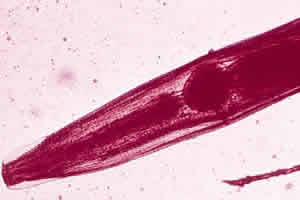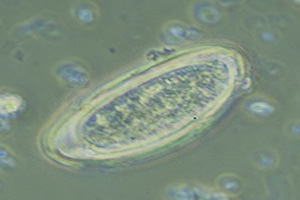Nematodes
Enterobius vermicularis (adult) |
 |
| Common Name | Pinworm |
| Symptoms | Itchy butt |
| Characteristics | Readily identified by the characteristic dorsoventral cephalic inflation of the cuticle |
| Pathogenic | YES |
Enterobius vermicularis egg |
 |
| Characteristics | One side is flattened |
